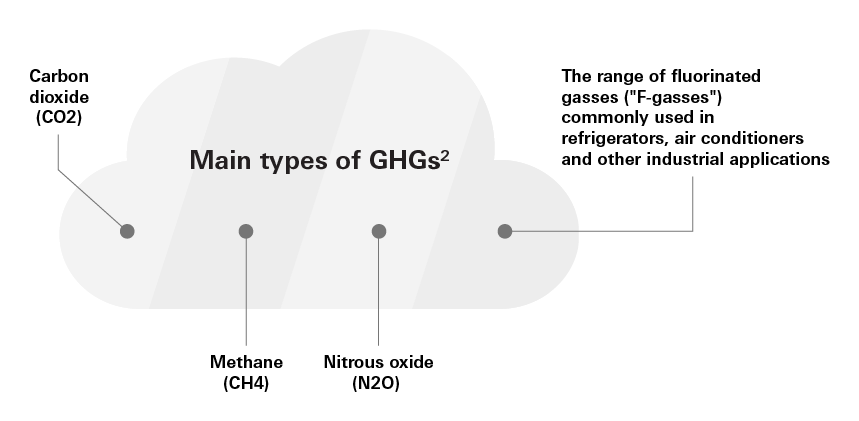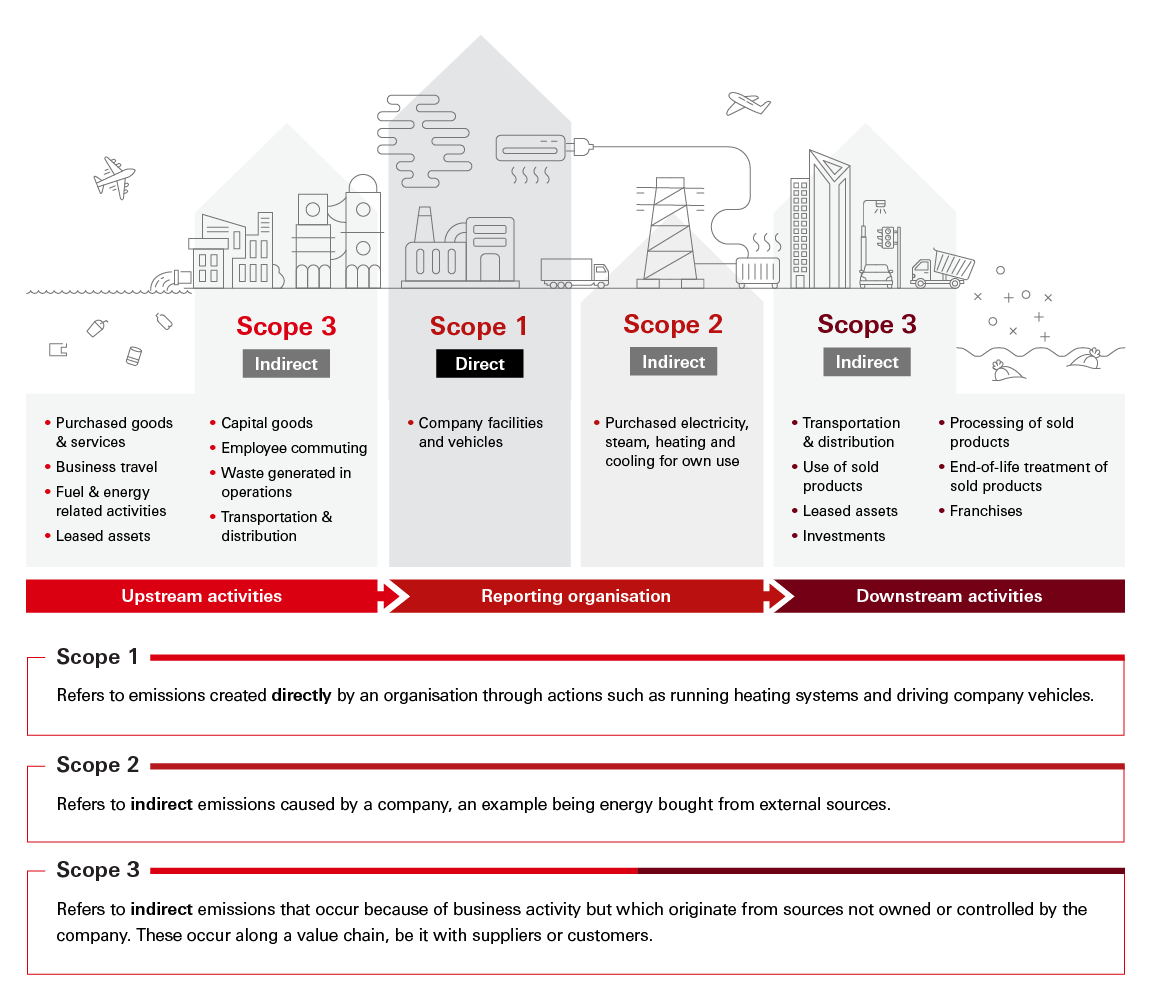- Article

- Infrastructure and Sustainable Finance
- Regulations
How can businesses measure their carbon emissions effectively?
With the concerns around climate change continuing to grow and emerging regulations around ESG reporting, it’s more important than ever for businesses to measure their carbon emissions efficiently and accurately.
As more companies adopt Environmental, Social and Governance (ESG) frameworks, the next step is to begin tracking towards a successful outcome in each of the key areas. For “E”, measuring carbon emissions is front and centre in this process.
Taking this measurement seriously is important because doing so can help businesses identify their highest emission sources, which directly relates to how they approach reduction.
For this reason, making progress in a company’s environmental impact starts with understanding where that impact is most concentrated.
What is a business’s carbon footprint comprised of?
Greenhouse gases (GHG), which trap heat in the atmosphere and contribute to global warming, are what make up a company’s carbon footprint1 .
How are GHGs measured?
The most commonly used metric to quantify greenhouse gas emissions is Global Warming Potential, or GWP100. This is a measure of how much energy the emissions of one tonne of gas will absorb over a 100-year time horizon, relative to the emissions of one tonne of CO2 over the same period.2 The larger the GWP – as a baseline, CO2 has a GWP of 1 – the longer it remains active in the atmosphere.
For example, sulphur hexafluoride (SF6) is one of the strongest known GHGs as it carries a GWP value of 25,200 times that of CO2 and can stay in the atmosphere for upwards of 3,200 years. On this basis, SF6, which is often emitted during electricity transmission and distribution, is considered a much more dangerous GHG than CO2.
Understanding the GWP of different GHGs is therefore an important element in emission reduction strategies. Businesses can then focus their attention on those areas of their operations which are most harmful from an environmental impact perspective.
What are the three scopes of emissions?
For every business, their carbon footprint will be comprised of three different categories, or scopes, of emissions.3 These scopes have been sufficiently defined by the Greenhouse Gas Protocol, which provides the world’s most widely used accounting standards in this area.
Categorisation of GHGs according to the Greenhouse Gas Protocol
Because scope 3 covers the widest range of activity, it’s often the largest source of emissions for businesses and therefore important to focus on when beginning to measure.
How can a business start measuring their emissions?
Although the process of measuring carbon emissions may feel uncertain at first, businesses can think about it as a combination of their operational activities, the kinds of emissions these activities produce, and each emission’s GWP. For businesses in Hong Kong, there are a variety of tools and reference material available to make getting started easier.
Carbon Footprint Repository for Listed Companies in Hong Kong
- This repository is a reference of total reported GHG emissions from listed companies in Hong Kong
Practical Guide on Carbon Audit and Management
- Hong Kong’s Environmental Protection Department (EPD) has developed a variety of guidebooks for public and private enterprises to begin auditing and managing their carbon emissions
Excel Template for “Paper Approach” to Carbon Audit
- Companies can use this template to identify and calculate the emissions across their operations
Additionally, data platforms such as Diginex are available in Hong Kong which use analytics to manage emissions and streamline the sustainability reporting process for businesses.
Together, these tools and guidelines provide an informed and reliable way for companies to begin measuring their carbon emissions. As the imperative around ESG continues, being able to track progress will only rise in importance and getting clear on how to approach this is a necessary first step.
Disclaimer
Today HSBC finances a number of industries that significantly contribute to greenhouse gas emissions. We have a strategy to help our customers to reduce their emissions and to reduce our own. For more information visit www.hsbc.com/sustainability.
Learn more





